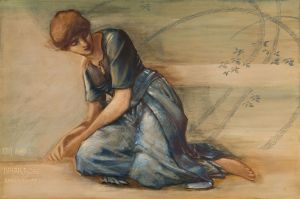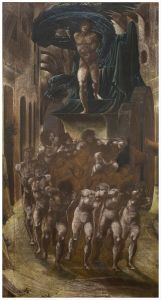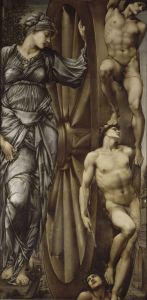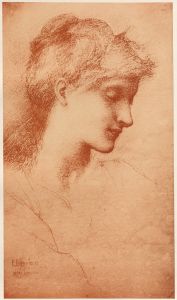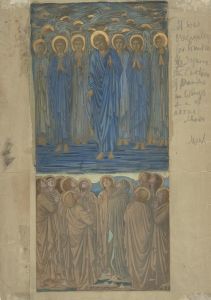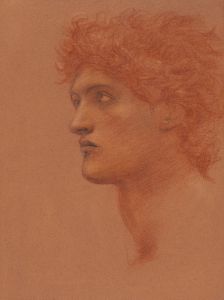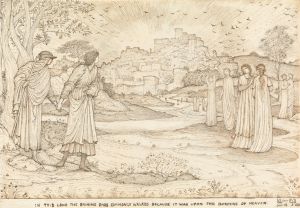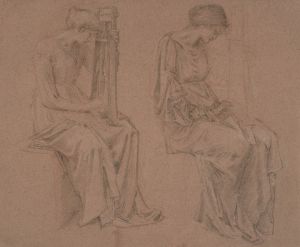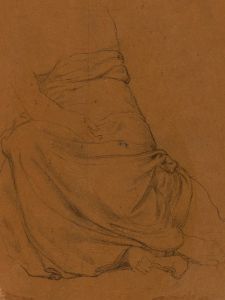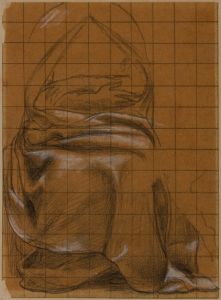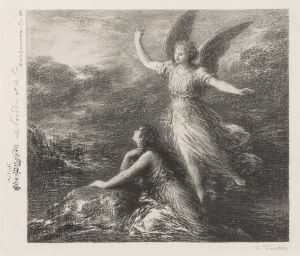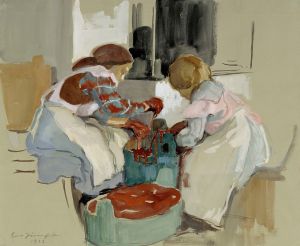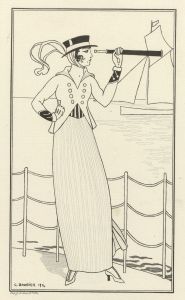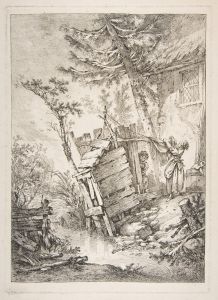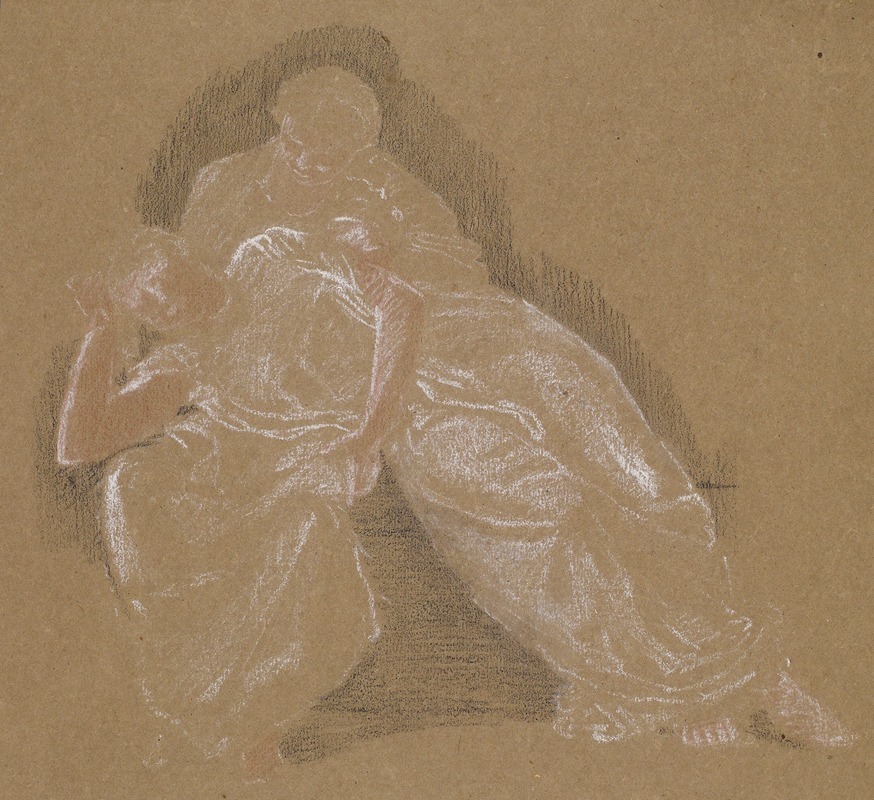
Female – Drapery Study of Two Seated Figures
A hand-painted replica of Sir Edward Coley Burne-Jones’s masterpiece Female – Drapery Study of Two Seated Figures, meticulously crafted by professional artists to capture the true essence of the original. Each piece is created with museum-quality canvas and rare mineral pigments, carefully painted by experienced artists with delicate brushstrokes and rich, layered colors to perfectly recreate the texture of the original artwork. Unlike machine-printed reproductions, this hand-painted version brings the painting to life, infused with the artist’s emotions and skill in every stroke. Whether for personal collection or home decoration, it instantly elevates the artistic atmosphere of any space.
"Female – Drapery Study of Two Seated Figures" is a drawing by the British artist Sir Edward Coley Burne-Jones, a prominent figure associated with the Pre-Raphaelite Brotherhood and the later Aesthetic Movement. Burne-Jones was known for his detailed and imaginative works, often drawing on themes from mythology, religion, and medieval romance.
This particular drawing, "Female – Drapery Study of Two Seated Figures," exemplifies Burne-Jones's skill in capturing the intricate details of drapery and the human form. The study focuses on two seated female figures, showcasing the artist's meticulous attention to the folds and flow of fabric. Such studies were a common practice for Burne-Jones, as they allowed him to explore the interplay of light and shadow on draped cloth, which was a significant aspect of his larger compositions.
Burne-Jones's work was heavily influenced by his close association with other members of the Pre-Raphaelite Brotherhood, particularly Dante Gabriel Rossetti. The Brotherhood sought to return to the detail, intense colors, and complex compositions of Quattrocento Italian art. Burne-Jones extended these principles into his own unique style, characterized by elongated figures and a dreamlike quality.
The drawing likely served as a preparatory study for a larger painting or series of works. Burne-Jones often created numerous sketches and studies before embarking on his final pieces, ensuring that every element was carefully planned and executed. His studies of drapery were not merely technical exercises but were integral to his artistic process, helping him to convey emotion and narrative through the subtleties of fabric and form.
Burne-Jones's fascination with drapery can be traced back to his admiration for the works of the Italian Renaissance, particularly those of Leonardo da Vinci and Michelangelo, who were masters of depicting the human form and its interaction with clothing. By focusing on drapery, Burne-Jones was able to imbue his figures with a sense of movement and life, even in their stillness.
The drawing reflects Burne-Jones's broader artistic themes, which often included a sense of melancholy and otherworldliness. His figures, while grounded in reality through their detailed rendering, often appear ethereal and timeless, existing in a space that is both familiar and fantastical.
"Female – Drapery Study of Two Seated Figures" is an example of Burne-Jones's dedication to his craft and his ability to transform a simple study into a work of art in its own right. The drawing not only highlights his technical prowess but also his ability to convey a narrative through the subtle interplay of line and form.
Burne-Jones's legacy is significant in the context of 19th-century British art. His works continue to be celebrated for their beauty and complexity, and his studies, such as this one, offer insight into the meticulous process behind his larger masterpieces. The drawing remains a testament to Burne-Jones's skill and his enduring influence on the world of art.





